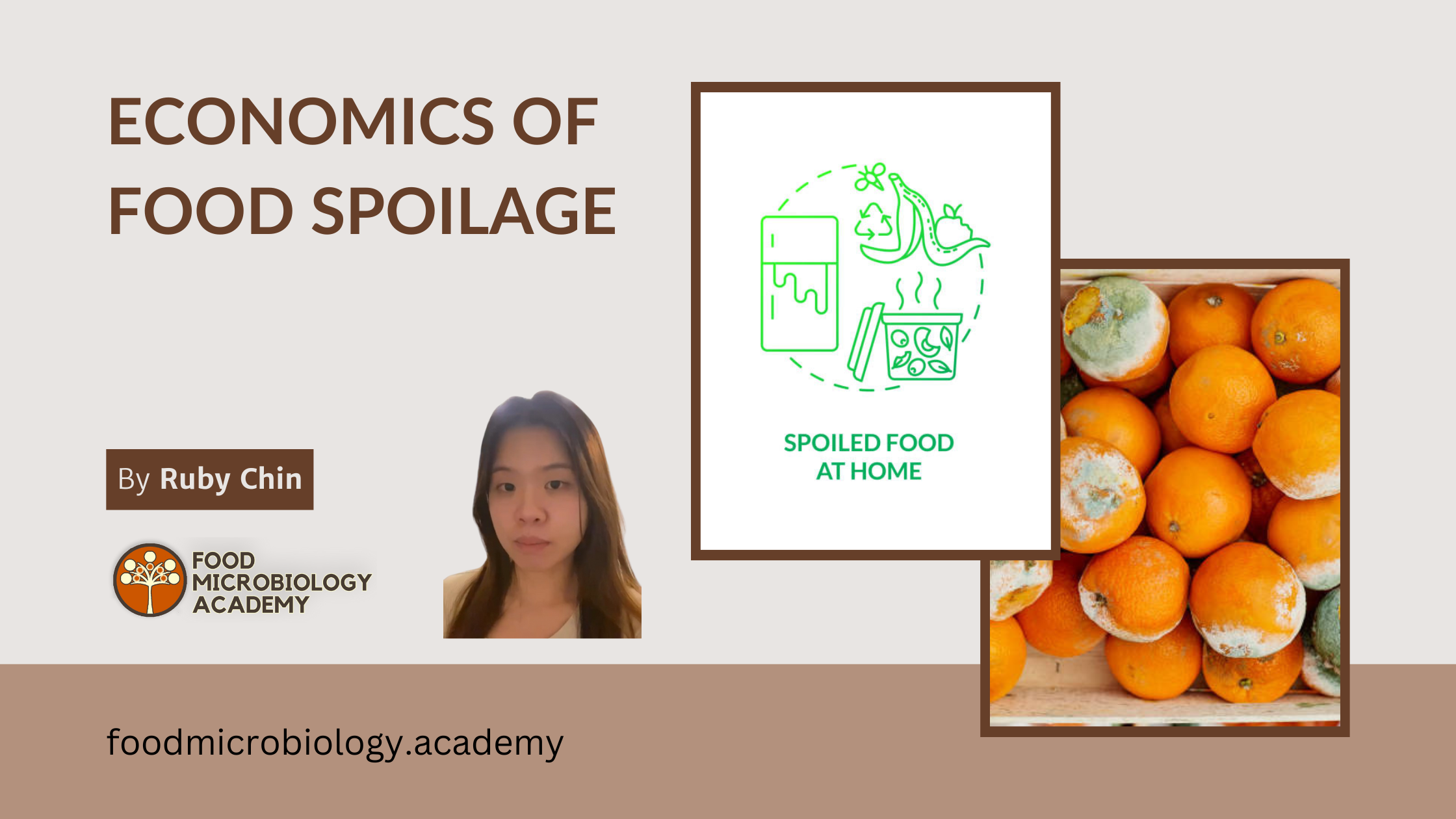An article compiled on 10 July 2024 by Ruby Chin, who completed her industry experience internship with us between June 24 and July 18.
Introduction
Lately, food spoilage has become an increasingly concerning problem that can affect anyone, whether it be within households or large scale businesses in the food industry. Food spoilage happens when a fresh food or product becomes unsafe or undesirable for consumption due to changes in its properties. One of the major contributors is due to microbial contamination of food or drink products.
While it is important to note that not all food that is described as spoiled poses a significant risk to our health and wellbeing, food spoilage is still a major concern as it greatly contributes to food waste and economic losses to many food manufacturing or production businesses worldwide. In this article, we’ll be discussing and delving into the causes of food spoilage, its detrimental effects, and most importantly, how to prevent food spoilage from occurring.
Causes of Microbial Food Spoilage
As mentioned above, one of the major contributors to food spoilage is contamination of food or drinks due to microbial growth. Other factors that may cause food spoilage include various enzymatic reactions due to catalysis of enzymes naturally found in food, or other physical and chemical factors such as exposure to oxygen and temperature fluctuations.
When it comes to microbial food spoilage however, food becomes spoiled due to growth of different harmful microbes such as bacteria, moulds, and yeasts. These are the major culprits in food spoilage as they contaminate food and go on to break down food components before producing certain enzymes and metabolites that can significantly alter the contaminated food’s taste, texture, and smell, rendering it unattractive or unsuitable for consumption. These microbes that have the potential to cause microbial food spoilage include Escherichia coli, Saccharomyces cerevisiae and some filamentous fungi species.
Effects of Food Spoilage
One of the most obvious negative impacts of food spoilage by microbes is the detrimental health risks that they possess. Spoiled food due to microbial contamination can harbour many harmful microbes, such as bacteria that include Salmonella and E. coli. These, when present in contaminated food or drink products and ingested by humans, can go on to cause foodborne illnesses and diseases, with symptoms ranging from just a slight or mild discomfort to more severe ones that require immediate urgent care.
Another detrimental effect of microbial food spoilage that greatly impacts the food industry and business is economic loss. As food spoilage makes a food product undesirable or unsuitable for consumption, both consumers and businesses may be subjected to major financial losses due to the wasted food. For instance, mass food spoilage due to unhygienic practices in restaurants or supermarket chains may contribute to higher costs and lower profit margins for the business owners.
The environmental impacts of food spoilage and consequent food wastage is also a major problem that the public should be educated and aware about. Since food waste plays a role in the emission of greenhouse gases such as carbon dioxide and methane, it is a main factor that contributes towards global warming. In general, wasted food also causes a waste in resources that are used in its production, transportation, and disposal.
Prevention Strategies for Food Spoilage
There are a wide range of steps that we can take to greatly reduce the frequency of food spoilage and prevent food wastage. One of them includes ensuring the proper and appropriate storage of food products. For example, it is important to store perishable foods like raw meats and dairy in refrigerators at adequate temperatures that are either below 4°C or 40°F in order to significantly slow microbial growth and therefore prevent the contamination and spoilage of food or drink products. Making sure that food is stored within airtight containers or vacuum-sealed bags is also crucial to slow the food spoilage process as it limits the food’s exposure to air. This helps to slow down oxidation processes and thus microbial contamination.
Several hygienic practices and habits should also be taken as a prevention strategy for food spoilage. These may involve the maintenance of clean cooking surfaces in kitchens or proper cleaning of cooking utensils and storage containers. Another major strategy that is easy to implement but oftentimes neglected is the adequate washing and cleaning of hands before handling food products in order to prevent cross-contamination. This is because cross-contamination of food is a way to introduce spoilage microorganisms to fresh foods, which then causes food spoilage and waste.
On an industry scale, it is paramount to have appropriate monitoring and rotation procedures. For instance, regular checking and monitoring of food items for signs of spoilage such as foul odours, mould growth, or changes in texture within factories, along with rotating stocks to use older items first in grocery stores are all ways that can help to slow microbial contamination of food products.
Conclusion
Food spoilage is a complex issue that is mainly a result of microbial contamination. To prevent unnecessary economic losses, detrimental health effects and negative environmental impacts, we should collectively try to educate ourselves and make sure we understand the various causes and effects of microbial food spoilage. Taking this step will allow us as individuals or businesses to take specific proactive steps to minimise future food spoilage and wastage.



